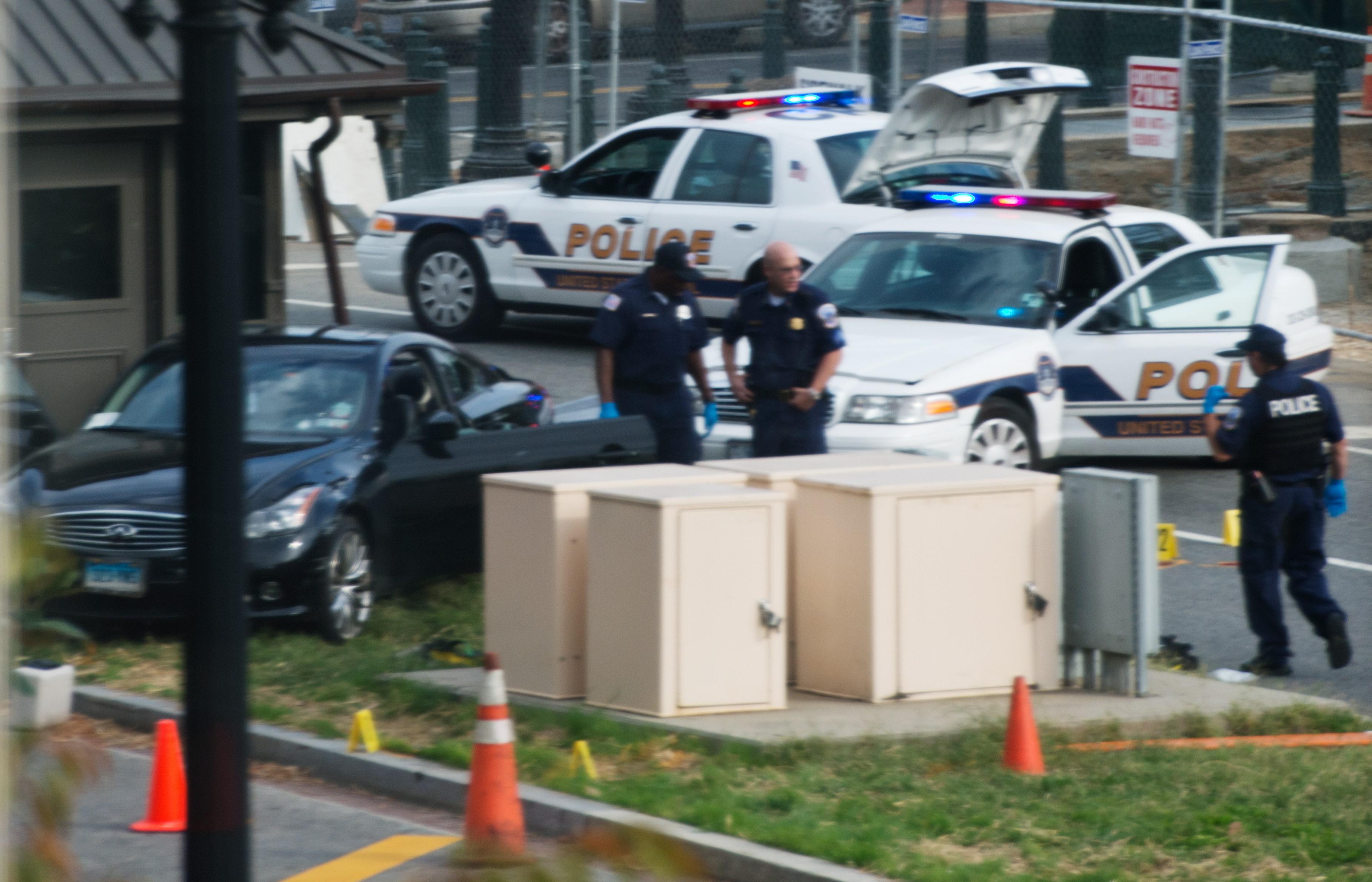In January 2005, two days before President George W. Bush’s second inauguration, a Michigan man named Lowell Timmers drove an old van into downtown Washington, D.C., parked it one block from the White House, at the intersection of Pennsylvania Avenue and 15th Street NW, and announced that his van was wired to explode. Soon, police and Secret Service agents had evacuated nearby buildings, established a perimeter, and surrounded Timmers, who was holding something he claimed was a trigger and making various demands. After several tense hours, Timmers surrendered peacefully and the city returned to normal. Nobody was hurt.
I thought of Timmers after the car chase and shooting that paralyzed Capitol Hill for a few hours Thursday afternoon. Like the Timmers incident, yesterday’s events started when a mysterious car pulled up near the White House. Unlike the Timmers incident, yesterday ended violently, with a Capitol Police officer and Secret Service officer injured, a 1-year-old child in protective custody, and a 34-year-old Stamford, Conn., woman shot to death by police. And the more I learn about yesterday’s incident—that the woman had her infant daughter in the car with her; that police say she did not appear to be armed; that she may have been suffering from post-partum depression—the more I wonder whether it really had to end in gunfire.
Here is what we know about what happened. A dental hygienist named Miriam Carey drove her black Infiniti into a White House security checkpoint Thursday afternoon, striking a Secret Service agent in the process. A brief car chase ensued, ending up on Capitol Hill, where the Infiniti was quickly boxed in by police, who drew their guns and converged on the car. Before they could apprehend Carey, she threw the car into reverse, banging into a parked police car, and sped away; police fired about eight shots in the car’s direction before giving chase. (On CNN yesterday afternoon, commentators assured the nation that police showed admirable restraint by holding fire until Carey decided to flee, but what was the alternative? Going for a killshot at the very first sign of noncompliance?) Specific details of what happened next are scarce, but we know that the incident was resolved when officers caught up with Carey elsewhere on Capitol Hill and apparently fired into her stopped car, killing her.
ABC News and other sources are now reporting that police have “no indication the woman was even armed.” But there’s still much we don’t know, like whether Carey had made any sort of threat, or whether she meant to cause greater harm than she did. An erratic, unresponsive driver acts violently before fleeing police in the heart of official Washington. Her motives and intent are unclear. How do you respond in the moment? What do you do?
Especially considering last month’s Navy Yard shooting, you can hardly blame police for assuming the worst-case scenario—that Carey had a gun, or a bomb, and meant to use it—and then using that assumption to justify the use of force. And Carey certainly acted erratically, in a place where erratic behavior is understandably treated with the utmost scrutiny and caution.
Even if Carey was unarmed, as seems to have been the case, you could say that, in the wrong hands, a car itself can be a deadly weapon, and that’s fair; Carey could have hurt or killed any number of people yesterday with her reckless driving. But you can stop a fleeing car by any number of nonviolent methods: barricades, stop sticks. I question the leap of logic by which “this person is acting like a maniac and we don’t know why” becomes “better safe than sorry,” and then becomes a justification for shooting her in her car—no matter where that car is parked.
But again, we don’t yet know whether this was the leap Capitol Police made, and at this point, it’s hard to fault the police and other responders for their actions yesterday. They were acting in the moment, with very little information to go on, and I’m sure they did what they felt was appropriate at the time. But there’s a difference between acting on what you know and acting on what you fear. There’s a middle ground between security and aggression. Absent any evidence that Miriam Carey had a gun or a bomb, it was perhaps premature to assume that she was a public safety threat, as opposed to just an agitated woman who could have been subdued by other means.
In 2005, as police were converging on Lowell Timmers and his suspicious van, you probably could have made a case that a sniper should just take him out and end the standoff at once. But police held their fire and talked him down, and, as it turns out, Timmers didn’t actually have a bomb: just some gasoline that he never actually had any intention of igniting. He was sentenced to less than three years in prison.
